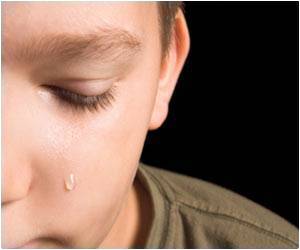Brain liquefaction, which usually occurs after stroke may be toxic to the remaining surviving brain.

‘Liquefied, dying brain tissue is toxic and can leak into the remaining healthy portion of the brain, thereby causing harm.’





The new findings may open the door for developing new treatments to ward off dementia after stroke; they are described in Neurobiology of Disease. "Most people probably assume that the brain heals in the same way as other tissues," said Kristian Doyle, PhD, an assistant professor in the UA Department of Immunobiology. "But it doesn't; dead brain tissue doesn't just heal and go away like other bodily injuries. Instead it liquefies and remains in this liquefactive state for a long time."
To better understand this dying fluid, Dr. Doyle and his laboratory team studied mice that had experienced strokes. First, the researchers extracted fluid from the area of liquefaction and tested its toxicity by placing it in a petri dish with living neurons. After four hours, more than 50 percent of the neurons in the dish had died, compared to neurons that were placed in a dish with regular, healthy brain fluid.
The researchers then evaluated how well this toxic fluid was sealed off from the surviving brain.
Normally, a scar forms around dying brain tissue after a stroke. This scar, known as a glial scar, creates a barrier around the injured area to protect the remaining brain; it's formation is critical to the healing process.
Advertisement
Then they injected a dye into the injured portion of the brain. At seven weeks post-stroke, the dye was able to spread past the glial scar and into the healthy brain region. According to Dr. Doyle, this suggested that toxic substances present in the liquefied tissue also leak into the brain after a stroke, potentially killing healthy neurons.
Advertisement
Dr. Doyle suspects this slow, leaking fluid may be a cause of dementia after stroke. Of the 10 million people who survive a stroke each year, about one-third will develop dementia for unclear reasons, he said.
If the brain is injured near the hippocampus -- the portion of the brain responsible for memory -- perhaps this slow leak of toxic fluid causes neurodegeneration, the loss of neurons in the brain, and ultimately, memory problems.
"This work really challenges the old paradigms and breaks new ground critical for our understanding of stroke and its consequences," said Janko Nikolich-Zugich, MD, PhD, chair of the UA Department of Immunobiology. "We used to think that the glial scar forms a fool-proof barrier, and had no idea about the toxicity of the liquefied brain materials. Thanks to this research, we now will be able to consider new and different stroke therapies."
Nevertheless, further research is needed. The team hopes to verify its results in the future by showing that post-stroke memory problems can be curbed with a drug that makes the glial scar's barrier more robust.
Research also is needed to find out precisely how long the toxic fluid lasts. Liquefied brain tissue eventually will result in an empty cavity in which healthy brain tissue once existed. Dr. Doyle's lab believes that the liquefied tissue lasts for months in the brain before the process is complete.
Source-Eurekalert













